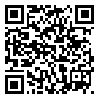Volume 30, Issue 2 (2023)
AIJH 2023, 30(2): 107-130 |
Back to browse issues page
Download citation:
BibTeX | RIS | EndNote | Medlars | ProCite | Reference Manager | RefWorks
Send citation to:



BibTeX | RIS | EndNote | Medlars | ProCite | Reference Manager | RefWorks
Send citation to:
zainalipour H, zarei E, moosapour N, samavi S A. Types of Vocational Support for Newly Recruited Teachers: A Systematic Review. AIJH 2023; 30 (2) :107-130
URL: http://aijh.modares.ac.ir/article-31-52250-en.html
URL: http://aijh.modares.ac.ir/article-31-52250-en.html
1- Assistant Professor, Department of Educational Sciences, Hormozgan University , hzeinalipour@hormozgan.ac.ir
2- PhD Candidate in Curriculum, Hormozgan University.
3- Professor, Hormozgan University.
4- Associate Professor, Department of Educational Sciences, Hormozgan University.
2- PhD Candidate in Curriculum, Hormozgan University.
3- Professor, Hormozgan University.
4- Associate Professor, Department of Educational Sciences, Hormozgan University.
Abstract: (1454 Views)
The main purpose of this paper is to identify the vocational support methods for new teachers worldwide. In this qualitative research with the emergence design, the technique of thematic analysis (Attride-Stirling) was used to analyze the themes of English papers on the Induction published from 2010 to 2020, and selected from three data-bases by using a systematic text review model. After using the MAXQDA software, the data were analyzed in the form of two comprehensive, six organized, and 29 basic themes. The results show that the informal Induction for new teachers includes two components of "out-school support" and "in-school support" that complement each other. The vocational support has made teachers more resilient and efficient. Accordingly, it is suggested that our new teachers and educational system use this global experience and to increase the efficiency and sustainability of new teachers, there capacities should be utilized in the communication networks of their living and working environment.
Article Type: Qualitative Research |
Subject:
Arts and Humanities (General)
Received: 2021/05/4 | Accepted: 2021/09/13 | Published: 2023/01/3
Received: 2021/05/4 | Accepted: 2021/09/13 | Published: 2023/01/3
Send email to the article author
| Rights and permissions | |
 |
This work is licensed under a Creative Commons Attribution-NonCommercial 4.0 International License. |






